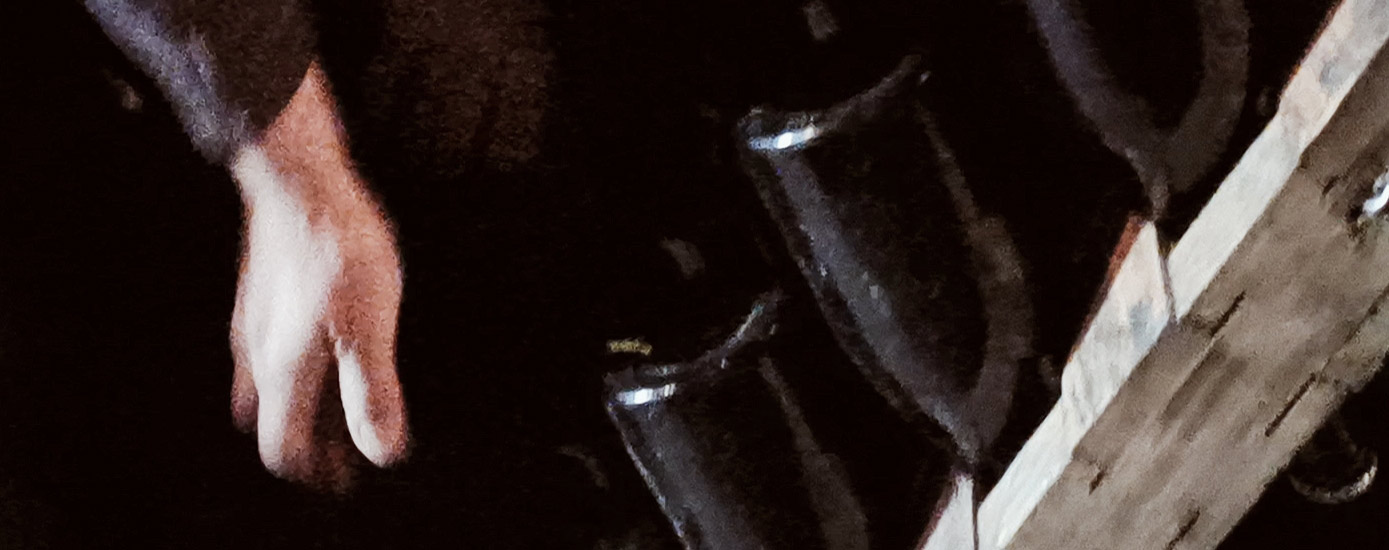There are ways to speed up the process, like using a Gyropalette, which can rotate 504 bottles at a time, 24 hours a day, and complete the riddling process in 7-10 days. But this lacks the romance and prestige of remuage (the French term for riddling). The top Champagne houses, after all, still employ remueurs for their most prestigious wines. The best remueurs can rotate 20,000 to 70,000 bottles a day. But it’s hard work and very repetitive.
Surely, there is a middle ground: a quicker, less labour-intensive, less complicated method of moving the lees into the neck of the bottle prior to disgorgement but a method with a healthy dosage of tradition and romance?
When I embarked on my #harvest2022 adventure, the mission involved the promotion of lesser-known grape varieties and regions, and some experimental winemaking that would modernise the process (for example, making a modern qvevri wine in Georgia and combining futuristic grapes with natural winemaking methods in Austria). So far, the winemaking behind my sparkling wine in Hungary has been very traditional – apart from the choice of the base wine (a blend of Viktória Gyöngye and Grüner Veltliner). Now, after a year of lying horizontal in one of Nádas Borműhely’s ancient storage cellars in the Etyek-Buda region (Hungary’s first PDO for sparkling wines), 180 of the 600 bottles have been put in an A-frame-shaped riddling rack (a pupitre).

After a few days resting in the wooden frame, the riddling process begins. Winemaker Szilárd Nádas (above) rattles through one side of the rack – 60 bottles – in seconds, using both hands.
He doesn’t believe riddling has to be ridiculously complicated.
Here is Szilárd’s technique:
- The wine is fined with bentonite and filtered before going into the bottle for the second fermentation.
- After a year of lying horizontal, 180 of the 600 bottles were put upside down in one and a half sides of the pupitres.
- These bottles were left to rest upside down for a few days before the riddling began.
- Szilárd always turns 90 degrees.
- The first round is 90 degrees clockwise each day – with a flick of the wrist – so the bottle completes a full turn (360 degrees) in four days.
- The second round is anticlockwise – 90 degrees at a time over six days (540 degrees).
- “Then we check the lees and, if it is necessary, we do 270 degrees clockwise (90 degrees at a time), and 180 degrees back.”
- Szilárd adds: “There are no strict rules for us. If we have time, we do it every day.”
- Typically, the process lasts about a month (about half the time allocated by many traditional Champagne houses).

In one of the pupitres is a clear bottle, so we can assess the effectiveness of the riddling. The heavier lees are already in the neck and bidule. The purpose of the twisting is to dislodge any of the fine lees stuck to the side of the bottle as this can cause gushing when opening or disgorging. I witnessed this when Szilárd opened a bottle (above) so I could taste the progress of the young wine.
I’m very pleased with the result so far. I believe this unique wine has a great deal of potential and will increase interest in the Viktória Gyöngye (Pearl of Victoria) grape, which was created in Hungary for sparkling wine (from Seyve-Villard 12375 and table grape Pearl of Csaba), but was only planted in a few experimental plots.

I took the rest of the opened bottle to French wine expert and winemaker Jérôme Pérez, co-founder of lapassionduvin.com and winemaker at Clos Veličane in Slovenia. He confirmed my first impressions: “I think it can be very successful because it is exactly what people want to have in their glass today: not too much aromatic, more minerality and, in the mouth, a lot of complexity and a long finish with saltiness. So, yes, I think it can be very successful, but it has to age a long time in bottle.”
When I poured the glass for him, I noted how clear it was. And the riddling process had only just begun.

 English
English French
French







.png)


